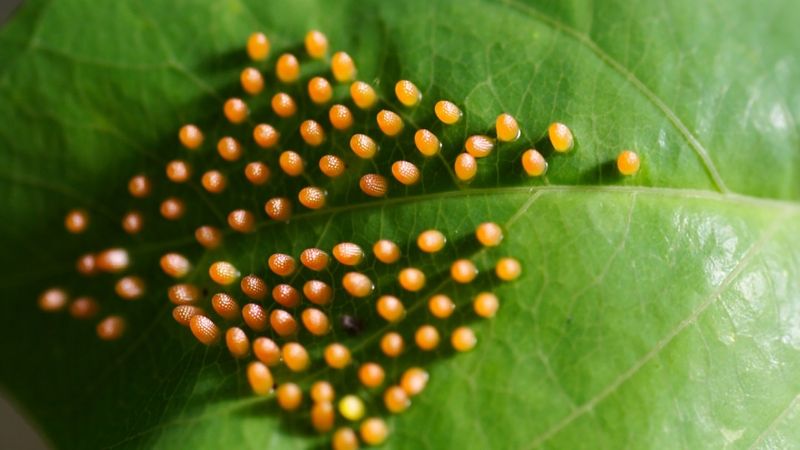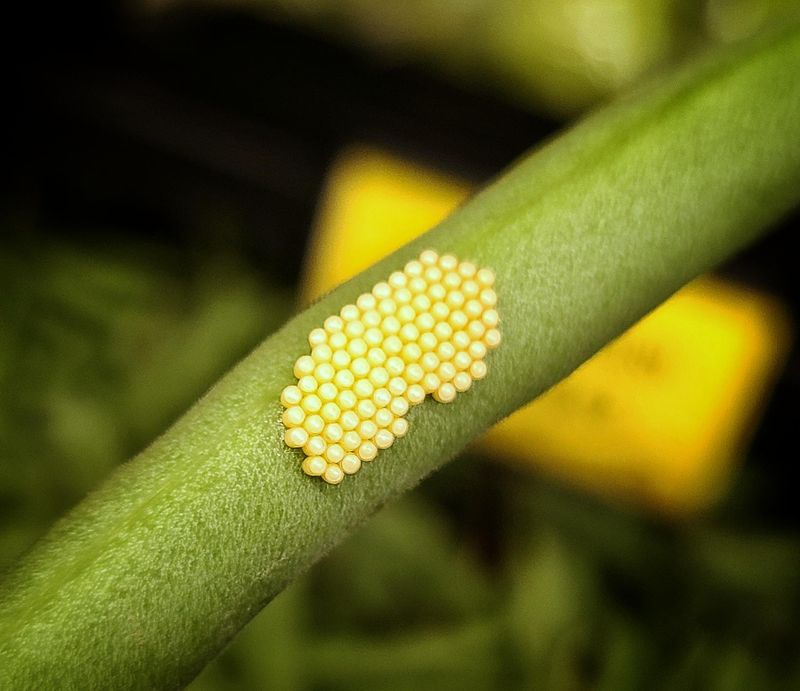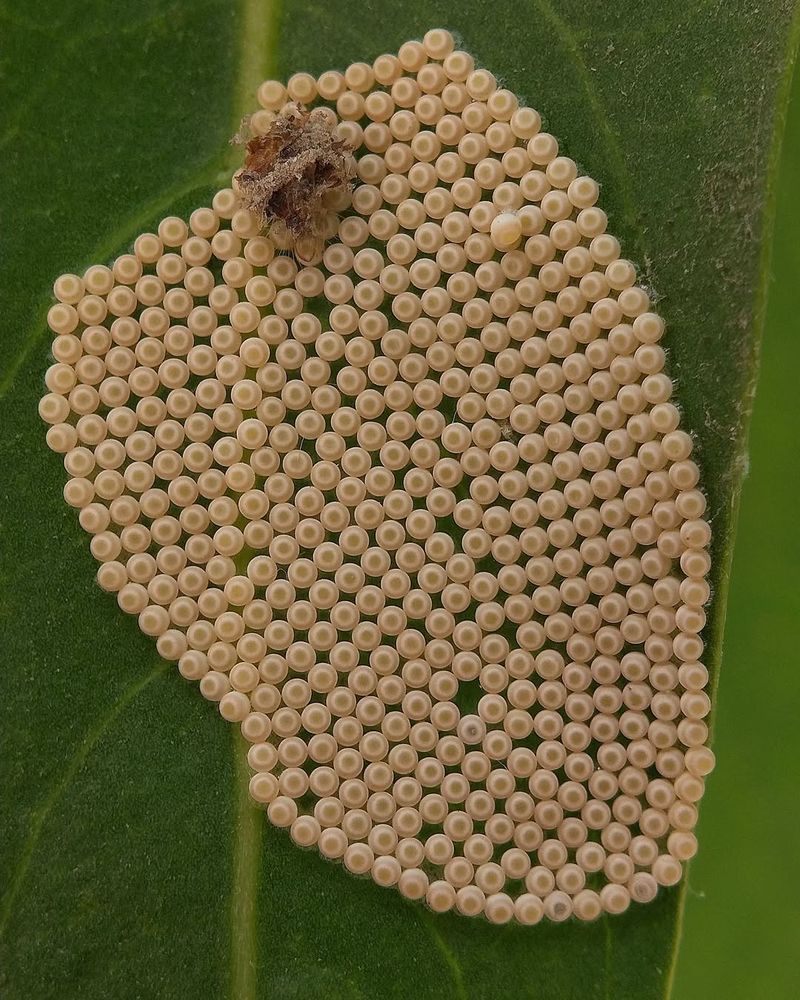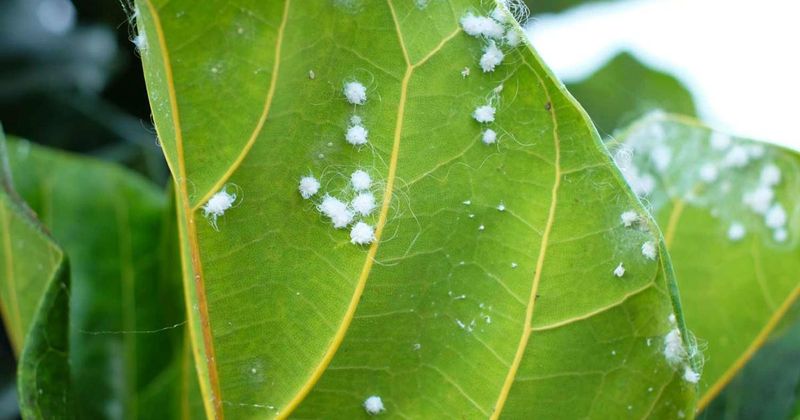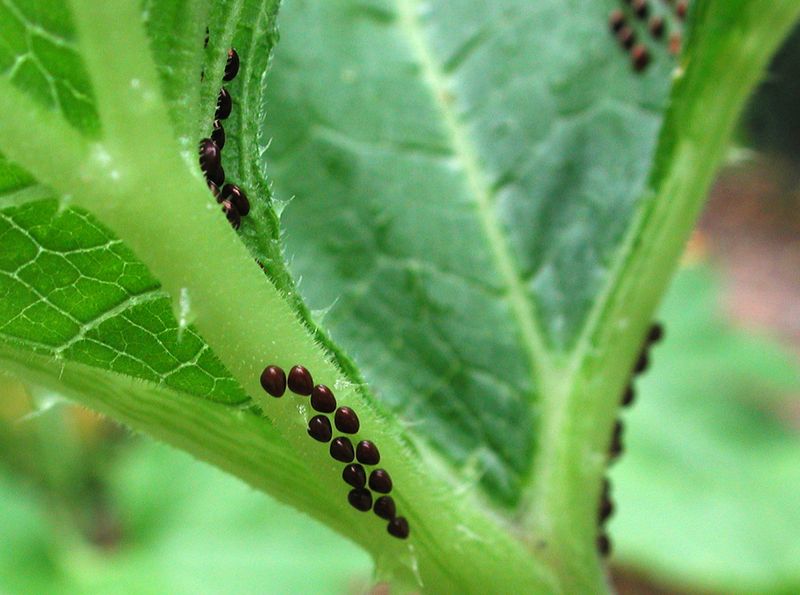Finding mysterious eggs on your plants can feel frustrating, especially when you don’t know what pest left them behind. Identifying these eggs early helps you protect your garden before damage spreads.
Texas gardeners face unique challenges with various insects attracted to our warm climate, making pest identification an essential skill for keeping plants healthy and thriving.
1. Check The Color And Shape Of Eggs
Egg color tells you a lot about which pest visited your plants. Aphids typically leave behind tiny yellow or green eggs, while whiteflies deposit pale yellow oval-shaped clusters. Squash bugs prefer bronze-colored eggs arranged in neat groups.
Shape matters just as much as color when identifying culprits. Round eggs often belong to beetles, whereas elongated ones might indicate moths or butterflies. Learning these visual clues helps you respond quickly with the right treatment for your Texas garden.
2. Examine Where Eggs Are Placed
Location reveals important clues about pest identity. Many insects hide their eggs on leaf undersides to protect them from predators and harsh sunlight. Tomato hornworm moths place single green eggs on top surfaces, making them easier to spot during morning inspections.
Stem-laying pests like squash vine borers deposit eggs near the plant base. Cabbage worms prefer the underside of outer leaves. Knowing these preferences helps you search the right spots and catch infestations before they explode across your entire garden.
3. Notice The Pattern And Arrangement
Bugs organize their eggs in distinctive patterns that work like fingerprints. Stink bugs arrange eggs in neat rows or hexagonal clusters, creating geometric designs on leaves. Lace bugs scatter eggs randomly across surfaces with no particular order.
Cabbage loopers deposit eggs individually rather than in groups. Meanwhile, Mexican bean beetles create yellow clusters on leaf undersides in tight formations. Recognizing these arrangements speeds up identification and helps you target treatments more effectively for Texas conditions.
4. Measure The Size Of Eggs
Size makes a big difference when narrowing down suspects. Aphid eggs appear almost microscopic, barely visible without magnification. Larger pests like caterpillar moths leave eggs you can easily see with the naked eye, sometimes reaching the size of pinheads.
Spider mites produce incredibly tiny eggs that look like dust specks. Beetle eggs fall somewhere in the middle range. Grabbing a magnifying glass helps you examine smaller specimens closely and match them to identification guides designed specifically for Texas gardeners.
5. Look For Protective Coverings
Some clever insects shield their eggs with special materials. Spittlebugs surround eggs with foamy masses that look like someone spit on your plants. Scale insects coat eggs with waxy or cottony substances that protect against weather and predators.
Tent caterpillars wrap eggs in silky bands around branches. These coverings help eggs survive Texas heat and cold snaps. Spotting these protective layers narrows your search considerably and tells you exactly which pest management strategy will work best for removal.
6. Observe Nearby Adult Insects
Adult pests often hang around after laying eggs, giving you direct identification clues. Spotting a white butterfly near cabbage plants strongly suggests cabbage worm eggs nearby. Orange and black beetles on tomatoes indicate Colorado potato beetle activity.
Watch for flying insects landing repeatedly on the same plants. Moths hovering at dusk might signal hornworm eggs appearing soon. Matching adults to eggs creates certainty in your diagnosis and allows you to act before hatching occurs in your Texas garden beds.
7. Monitor Seasonal Timing
Texas pests follow predictable seasonal schedules that help with identification. Squash bugs typically lay eggs in late spring when temperatures climb. Fall armyworms appear during late summer and autumn, matching their name perfectly.
Aphids multiply rapidly during mild spring weather before heat slows them down. Whiteflies thrive in summer heat that many other insects avoid. Tracking when you discover eggs against Texas seasonal patterns helps confirm which pest is responsible and plan prevention for next year.
8. Research Host Plant Preferences
Different pests show strong preferences for specific plants, making host identification incredibly valuable. Tomato hornworms rarely bother cucumbers, while cucumber beetles ignore tomatoes. Cabbage worms target brassicas exclusively, leaving peppers completely alone.
Bean beetles focus on legumes rather than leafy greens. Squash vine borers attack squash family members specifically. Learning which pests favor which plants eliminates guesswork when you find eggs. This knowledge transforms you into a more effective Texas gardener who catches problems early.



